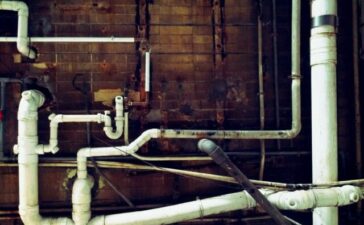Basic knowledge of home electrical wiring systems is necessary for renovations, repairs, and preventing any hazardous situations.
Home electrical wiring is a process of connecting various accessories for the continuous distribution of electrical energy. This can be from the supplier’s meter board to different equipment and appliances at home, such as lamps, television, air conditioners, etc.
Everyone should learn the basics of their home electrical wiring. You can always visit Electrician Charleston for any electrical services if you’re still unconfident. But when you’re doing a DIY project around the house, understanding the type of electrical wires in your home can make the task much easier. Such skills will also help you find any electrical problems or do any electrical remodeling or repairs in your home.
This article will teach you the basics of different types of electrical wiring that are used in domestic properties in Charleston.
So, let’s get started!
1, Cleat Wiring
A cleat wiring structure consists of uninsulated VIR or PVC wires that have been combined and braided. They are held on ceilings and walls by porcelain cleats with groves made of plastic or wood.
It is a temporary system of wiring, for example, army camping or under construction buildings. This makes it inappropriate for domestic premises. Moreover, it is being used very rarely in Charleston nowadays.
Benefits of Cleat Wiring
- Wire defects can be easily seen and repaired as the cables are exposed.
- Installation is cheap and simple.
- Alterations, inspections, and additions can be done easily.
Drawbacks of Cleat Wiring
- Appearance is not aesthetic.
- Sag may occur after a few days of usage. Hence, it should not be used permanently.
- As the wires and cables are exposed to open air, they can be easily damaged by steam, oil, smoke, humidity, chemical, rain, and acidic effects.
- High chance of electric shock and fire.
- Can’t be installed in sensitive places or locations.
- Can only be used at low temperatures
- Not reliable, long-lasting, nor sustainable.
2, Casing and Capping Wiring
In Charleston, casing and capping was a famous wiring system in the past, but now it is considered obsolete and no longer used in new homes. The cables used in this system were VIR, PVC, or any other approved insulator.
The cables are carried via wooden casing enclosures which are bars of wood with parallel grooves. The grooves were made so that the opposite polarities could be separated. The capping, which was also made of wood, was used to cover the installed and fitted cables and wires in the casing.
Benefits of Casing and Capping Wiring
- Compared to conduit and sheathed wiring systems, this wiring system is relatively cheap.
- Can be customized easily.
- If neutral and phase wire is used in different slots, then repair is easy.
- Wires and cables remain safe from steam, oil, rain, and smoke.
- No risk of electric shock as the wires and cables are well covered.
Long-lasting because of the strong insulation of capping and casing.
Drawbacks of Casing and Capping Wiring
- The threat of fire outbreak in the casing and capping wiring system.
- Repairs are costly and require more material, which is difficult to find nowadays.
- Not appropriate in alkaline, acidic or humid conditions.
- The wood material can be damaged by white ants.
3, Batten Wiring (TRS or CTS)
In this wiring system, a single wire or a group of electrical wires are put over a well-seasoned, straight-teak, wooden batten. The batten is at least 10mm thick. A brass clip is used to hold the wires on the wooden batten and spaced at an interval of 15 cm for vertical runs and 10 cm for horizontal runs.
Benefits of Batten Wiring
- Comparatively cheap.
- Installation and repair are easy.
- Long-lasting and strong.
- Low chance of leakage current.
- Customization is easy.
- TRS cables are waterproof, steam proof, and chemical-proof.
Drawbacks of Batten Wiring
- Lubricating oil slightly affects the TRS cables.
- High risk of fire.
- Can’t be installed in open or outdoor areas.
- Not safe from weather effects and external wear & tear.
- Only suitable for 250 V or less.
- Heavy wires can not be installed in this system.
- Requires more wires and cables.
4, Lead Sheathed Wiring
Metal sheathed wiring is where wires are coated with VIR and then sheathed with a lead aluminum alloy containing approximately 95% lead. The entire lead covering is built electrically continuous and is linked to the earth at the point of entry. It is done to provide protection against electrolytic action (due to leaking current) and to give safety when the sheath becomes alive. The cables run over a wooden batten and are fixed by using link clips, similar to TRS wiring.
Benefits of Lead Sheathed Wiring
- Looks good and is easy to fix.
- The metal sheath provides protection to wires against atmospheric corrosion, mechanical damage, and entry of hydrocarbons.
- Excellent resistance to corrosion.
- Can be used as a grounding or earthing system.
- Long-lasting when proper earth continuity is maintained.
Drawbacks of Lead Sheathed Wiring
- Requires skilled labor and proper supervision.
- Labor-intensive because of heavy-weight of lead.
- Installation is expensive.
- Environmental disadvantages of using lead in case of underground cabling systems.
- Not safe for places where chemical corrosion can occur.
5, Conduit Wiring
There are two types of conduit wiring, depending on the pipe installation.
- Surface Conduit Wiring: where PVC or GI conduits are installed on the roof or walls. The conduits are fixed with the walls using a two-hole strap and base clip at regular intervals. The conduits contain the electrical wires inside.
- Concealed Conduit Wiring: it is when the conduits are concealed inside the chiseled brick wall or wall slots. It is common, since it is more aesthetically appealing and is stronger.
Benefits of Conduit Wiring
- Considered the safest wiring system in Charleston (concealed conduit wiring).
- Safe from humidity, chemical effects, and other external factors.
- Aesthetically appealing (concealed conduit wiring).
- No risk of electrical shock (unless not properly grounded).
- No risk of damaged cable insulation, fire, or wear and tear.
- As the old wires can easily be replaced, renovations are easier.
- Quite reliable.
Drawbacks of Conduit Wiring
- Expensive and difficult to install.
- Difficult to detect defects in the wiring.
- Difficult to add new connections in the future.
Home electrical wire systems may be complicated, but understanding the different types can help you plan for renovations, complete repairs, diagnose problems, and keep your wiring up to code.






